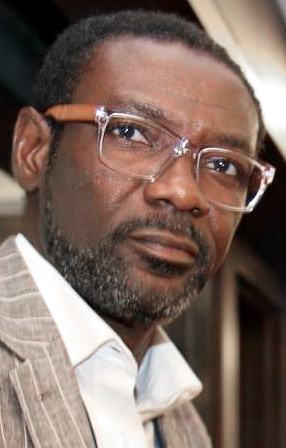

 Will you be at the ICANN 64 meeting in March 2019 in Kobe, Japan? If so (or if you can get to Kobe), would you be interested in speaking about any work you have done (or are doing) with DNSSEC, DANE or other DNS security and privacy technologies? If you are interested, please send a brief (1-2 sentence) description of your proposed presentation before 07 February 2019.
Will you be at the ICANN 64 meeting in March 2019 in Kobe, Japan? If so (or if you can get to Kobe), would you be interested in speaking about any work you have done (or are doing) with DNSSEC, DANE or other DNS security and privacy technologies? If you are interested, please send a brief (1-2 sentence) description of your proposed presentation before 07 February 2019.
It is once again time for our annual review of posts that received the most attention on CircleID during the past year. Congratulations to all the 2018 participants for sharing their thoughts and making a difference in the industry.
 ICANN just recently performed a Root Zone DNS Security Extensions (DNSSEC) Key Signing Key (KSK) Rollover. The recent KSK Rollover that took place on the 11th October 2018. The KSK Rollover has been successful and congratulations are in order. The Root Zone DNSSEC Key Signing Key "KSK" is the top most cryptographic key in the DNSSEC hierarchy. The KSK is a cryptographic public-private key pair.
ICANN just recently performed a Root Zone DNS Security Extensions (DNSSEC) Key Signing Key (KSK) Rollover. The recent KSK Rollover that took place on the 11th October 2018. The KSK Rollover has been successful and congratulations are in order. The Root Zone DNSSEC Key Signing Key "KSK" is the top most cryptographic key in the DNSSEC hierarchy. The KSK is a cryptographic public-private key pair.
 Are you ready? Are your systems prepared so that DNS will keep functioning for your networks? One week from today, on Thursday, October 11, 2018, at 16:00 UTC ICANN will change the cryptographic key that is at the center of the DNS security system - what we call DNSSEC. The current key has been in place since July 15, 2010. This is a long-planned replacement.
Are you ready? Are your systems prepared so that DNS will keep functioning for your networks? One week from today, on Thursday, October 11, 2018, at 16:00 UTC ICANN will change the cryptographic key that is at the center of the DNS security system - what we call DNSSEC. The current key has been in place since July 15, 2010. This is a long-planned replacement.
 In a little over two weeks, precisely in 17 days (on 11 October 2018 at 16:00 UTC), ICANN will roll the Domain Name System Security Extensions (DNSSEC) root Key Signing Key (KSK). If you are a Domain Name System (DNS) and DNSSEC expert already engaged globally on the topic, you are certainly both well aware and ready for the rollover. This article is probably not for you! If however, you are out there focused on your day to day running or managing a DNS infrastructure...
In a little over two weeks, precisely in 17 days (on 11 October 2018 at 16:00 UTC), ICANN will roll the Domain Name System Security Extensions (DNSSEC) root Key Signing Key (KSK). If you are a Domain Name System (DNS) and DNSSEC expert already engaged globally on the topic, you are certainly both well aware and ready for the rollover. This article is probably not for you! If however, you are out there focused on your day to day running or managing a DNS infrastructure...
 DNS-over-TLS has recently become a welcome addition to the range of security protocols supported by DNS. It joins TSIG, SIG(0) and DNSSEC to add privacy, and, in the absence of validating stub resolvers, necessary data integrity on the link between a full-service resolver and the users' stub resolver. (The authenticated source feature of TLS may also offer some additional benefits for those of a nervous disposition.) Good stuff. What is not good stuff is...
DNS-over-TLS has recently become a welcome addition to the range of security protocols supported by DNS. It joins TSIG, SIG(0) and DNSSEC to add privacy, and, in the absence of validating stub resolvers, necessary data integrity on the link between a full-service resolver and the users' stub resolver. (The authenticated source feature of TLS may also offer some additional benefits for those of a nervous disposition.) Good stuff. What is not good stuff is...
 The DNS system is, unfortunately, rife with holes like Swiss Cheese; man-in-the-middle attacks can easily negate the operation of TLS and website security. To resolve these problems, the IETF and the DNS community standardized a set of cryptographic extensions to cryptographically sign all DNS records... Now that these standards are in place, how heavily is DNSSEC being used in the wild? How much safer are we from man-in-the-middle attacks against TLS and other transport encryption mechanisms?
The DNS system is, unfortunately, rife with holes like Swiss Cheese; man-in-the-middle attacks can easily negate the operation of TLS and website security. To resolve these problems, the IETF and the DNS community standardized a set of cryptographic extensions to cryptographically sign all DNS records... Now that these standards are in place, how heavily is DNSSEC being used in the wild? How much safer are we from man-in-the-middle attacks against TLS and other transport encryption mechanisms?
 Do you have a great idea about DNSSEC or DANE that you'd like to share with the wider community? If so, and you're planning to be in Barcelona, Spain for ICANN63 in October 2018, submit a proposal to present your idea at the DNSSEC Workshop! Send a brief (1-2 sentence) description of your proposed presentation to [email protected] by Friday, 07 September 2018.
Do you have a great idea about DNSSEC or DANE that you'd like to share with the wider community? If so, and you're planning to be in Barcelona, Spain for ICANN63 in October 2018, submit a proposal to present your idea at the DNSSEC Workshop! Send a brief (1-2 sentence) description of your proposed presentation to [email protected] by Friday, 07 September 2018.
 The APNIC Blog has recently published a very interesting article by Willem Toorop of NLnet Labs on the relationship between Security Extensions for the DNS (DNSSEC) and DNS over Transport Layer Security. Willem is probably being deliberately provocative in claiming that "DoT could realistically become a viable replacement for DNSSEC." If provoking a reaction was indeed Willem's intention, then he has succeeded for me, as it has prompted this reaction.
The APNIC Blog has recently published a very interesting article by Willem Toorop of NLnet Labs on the relationship between Security Extensions for the DNS (DNSSEC) and DNS over Transport Layer Security. Willem is probably being deliberately provocative in claiming that "DoT could realistically become a viable replacement for DNSSEC." If provoking a reaction was indeed Willem's intention, then he has succeeded for me, as it has prompted this reaction.
 The period around the end of the nineteenth century and the start of the twentieth century saw a number of phenomenal advances in the physical sciences. There was J.J. Thompson's discovery of the electron in 1897, Max Planck's quantum hypothesis in 1900, Einstein's ground-breaking papers on Brownian motion, the photoelectric effect and special relativity in 1905, and Ernest Rutherford's study of the nucleus published in 1911 to mention but a few of the fundamental discoveries of the time.
The period around the end of the nineteenth century and the start of the twentieth century saw a number of phenomenal advances in the physical sciences. There was J.J. Thompson's discovery of the electron in 1897, Max Planck's quantum hypothesis in 1900, Einstein's ground-breaking papers on Brownian motion, the photoelectric effect and special relativity in 1905, and Ernest Rutherford's study of the nucleus published in 1911 to mention but a few of the fundamental discoveries of the time.